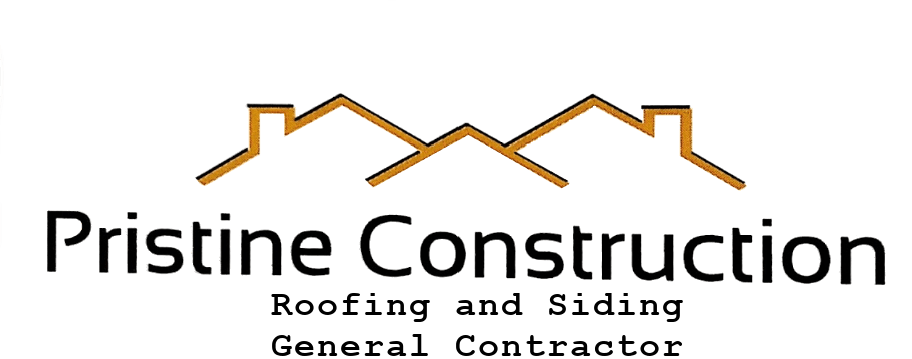Understanding Rubber and TPO Roofing Systems
Rubber and TPO (Thermoplastic Polyolefin) roofing systems represent some of the most advanced flat roofing technologies available today. At Pristine Construction LLC, we specialize in installing these durable, energy-efficient roofing solutions for commercial and residential properties throughout Lehigh Valley and surrounding areas. Our family-owned approach means we treat every roofing project with the same care and attention to detail as if we were working on our own home.
These single-membrane roofing systems offer exceptional protection against water infiltration while providing superior energy efficiency. Rubber roofing, technically known as EPDM (Ethylene Propylene Diene Monomer), has been protecting buildings for over 60 years, while TPO has emerged as a popular alternative over the past two decades. Both materials excel in different applications, and our expertise allows us to recommend the perfect solution based on your specific building requirements, climate considerations, and budget constraints.
Technical Specifications and Material Properties
EPDM rubber roofing consists of a synthetic rubber compound that provides exceptional weathering resistance and flexibility across extreme temperature ranges. The material maintains its elasticity from -40°F to 300°F, making it ideal for climates with significant temperature variations. Standard EPDM membranes come in thicknesses ranging from 45 to 90 mils, with our installations typically utilizing 60-mil membranes for optimal durability and cost-effectiveness.
TPO roofing combines the weatherability of EPDM with the heat-welded seam advantages of PVC systems. These membranes contain polypropylene and ethylene-propylene rubber polymerized together, creating a material that reflects up to 87% of solar radiation. TPO membranes range from 45 to 80 mils in thickness and come in white, tan, and gray colors. The heat-welded seams create a monolithic roofing surface that’s six times stronger than EPDM’s adhesive seams, providing superior wind uplift resistance rated for winds up to 150 mph when properly installed.
Installation Process and Methodology
Our installation process begins with a comprehensive roof inspection and substrate preparation. We remove all existing roofing materials down to the deck if necessary, inspect for structural damage, and ensure proper drainage slopes of at least 1/4 inch per foot. For EPDM installations, we typically use fully adhered systems where the membrane bonds directly to insulation boards using specialized adhesives. This method eliminates the need for ballast stones and reduces roof loading by approximately 10 pounds per square foot.
TPO installation requires precision heat welding using specialized equipment that heats both membrane surfaces to between 900°F and 1,100°F. We take our time on each job, ensuring every seam receives proper heat application and pressure for optimal fusion. Our technicians use automatic hot-air welders for long, straight seams and hand welders for detail work around penetrations, corners, and edges. Quality control involves testing every seam with a probe to ensure complete fusion, followed by air pressure testing on critical areas.
Applications and Building Types
- Commercial warehouses: TPO’s high reflectivity reduces cooling costs by up to 30% in large-scale facilities
- Retail establishments: EPDM’s black surface helps with snow melt in northern climates while providing quiet installation without business disruption
- Educational facilities: Both systems offer 20-30 year service lives with minimal maintenance requirements
- Healthcare buildings: TPO’s smooth surface resists biological growth and meets strict hygiene standards
- Residential flat roofs: EPDM provides cost-effective protection for modern homes with low-slope designs
Energy Efficiency and Environmental Benefits
TPO roofing systems qualify for ENERGY STAR certification and can help building owners achieve LEED credits. The white TPO membrane reflects solar radiation, reducing roof surface temperatures by up to 70°F compared to traditional black roofing materials. This dramatic temperature reduction translates to HVAC energy savings between 7% and 15% annually, depending on building type and climate zone.
EPDM roofing offers different environmental advantages, including complete recyclability at end-of-life and manufacturing processes that produce minimal waste. Black EPDM membranes suit buildings in heating-dominated climates where solar heat gain provides beneficial warming during winter months. Both roofing systems eliminate the need for periodic recoating required by built-up roofs, reducing lifetime maintenance chemical usage by approximately 75%.
Maintenance Requirements and Longevity
Proper maintenance extends the life of rubber and TPO roofing systems significantly beyond their warranties. We recommend biannual inspections focusing on seam integrity, flashing conditions, and drainage system functionality. TPO membranes require cleaning to maintain reflectivity, typically involving low-pressure washing with mild detergents. EPDM systems need minimal cleaning but benefit from annual applications of UV protectant on exposed edges.
With Pristine Construction LLC covering all the different areas of roofing work, from installation to maintenance, we ensure your investment provides maximum value. Our systematic approach to preventive maintenance identifies potential issues before they develop into costly problems, extending roof life expectancy by 5-10 years beyond industry averages.
